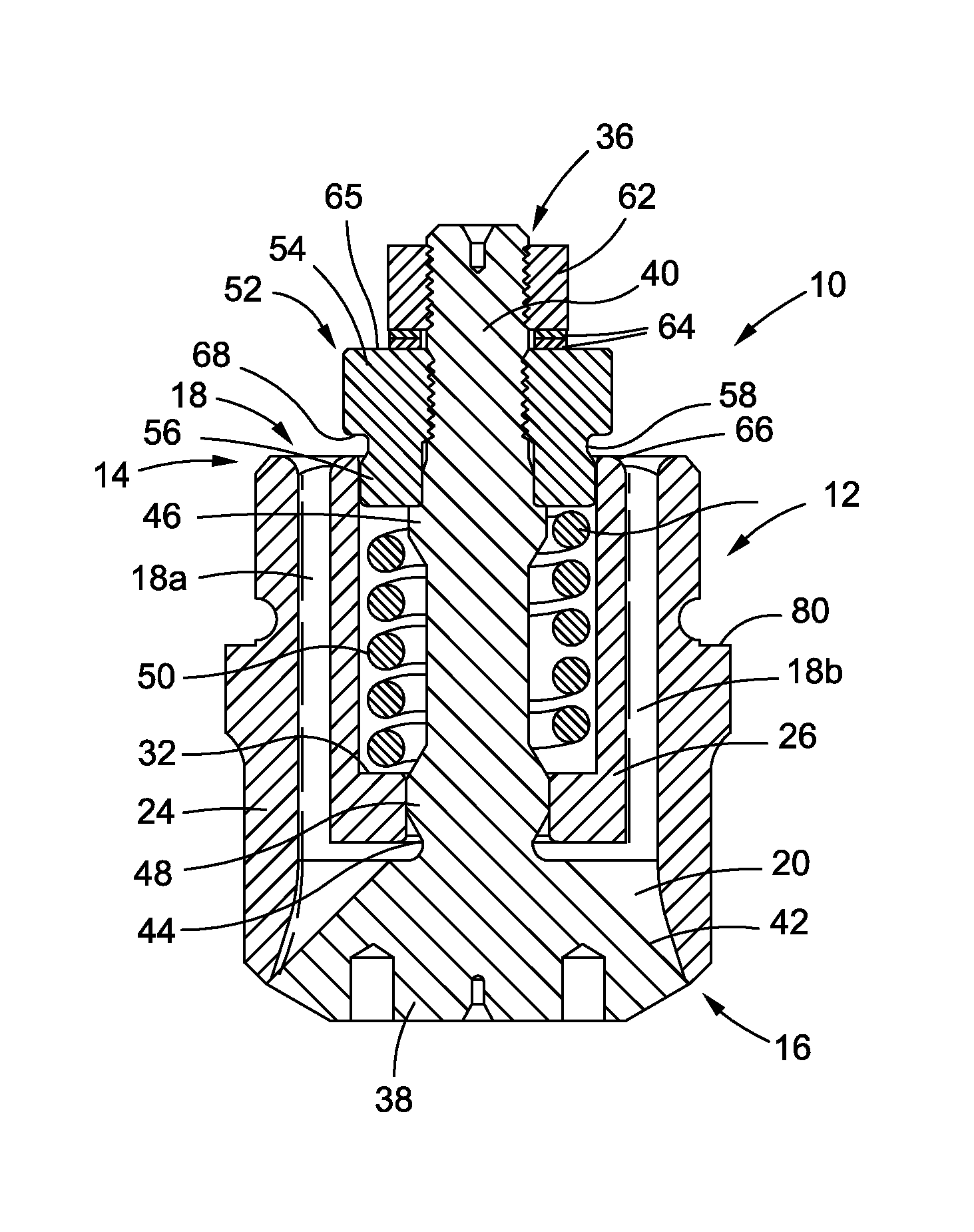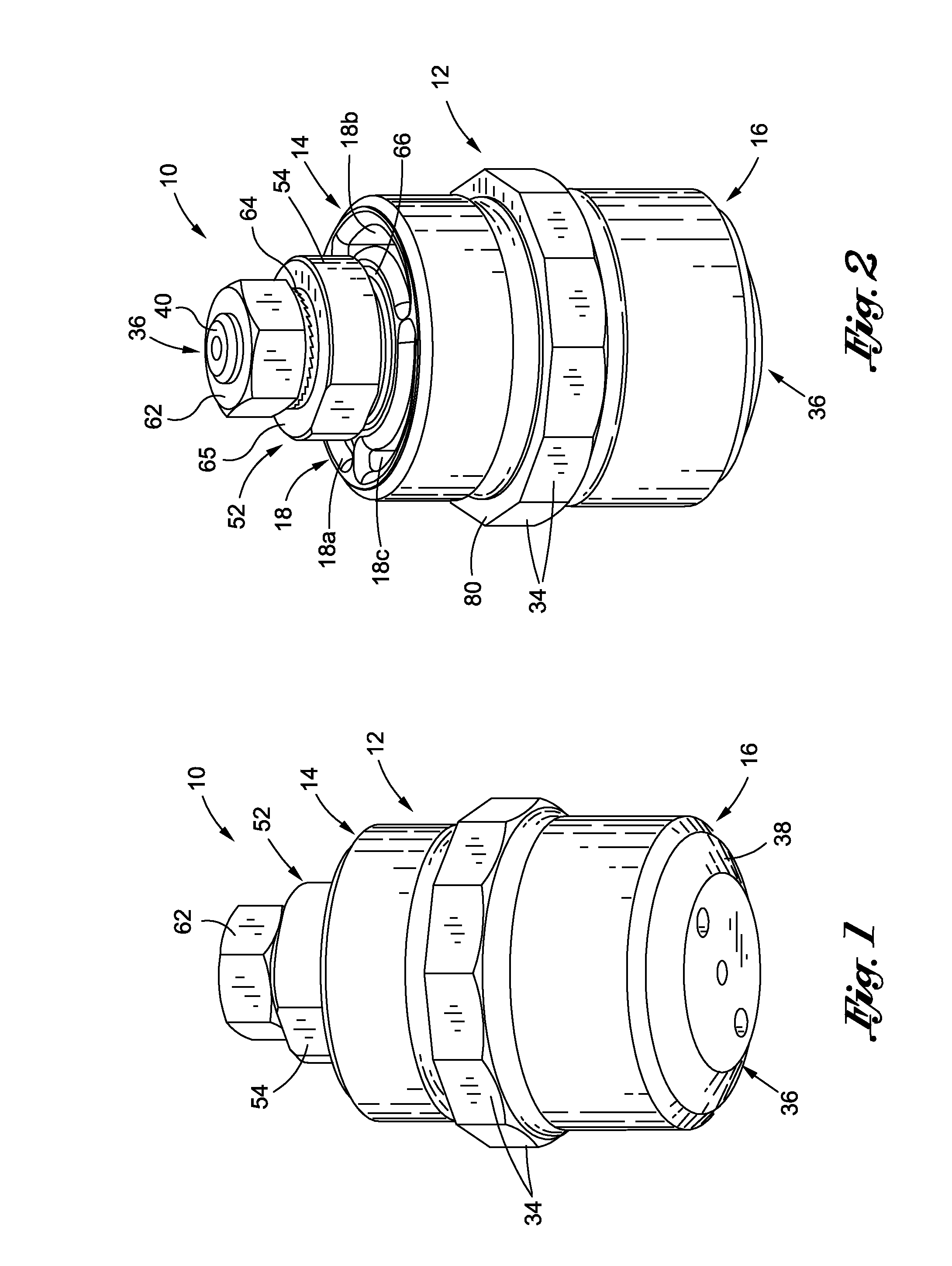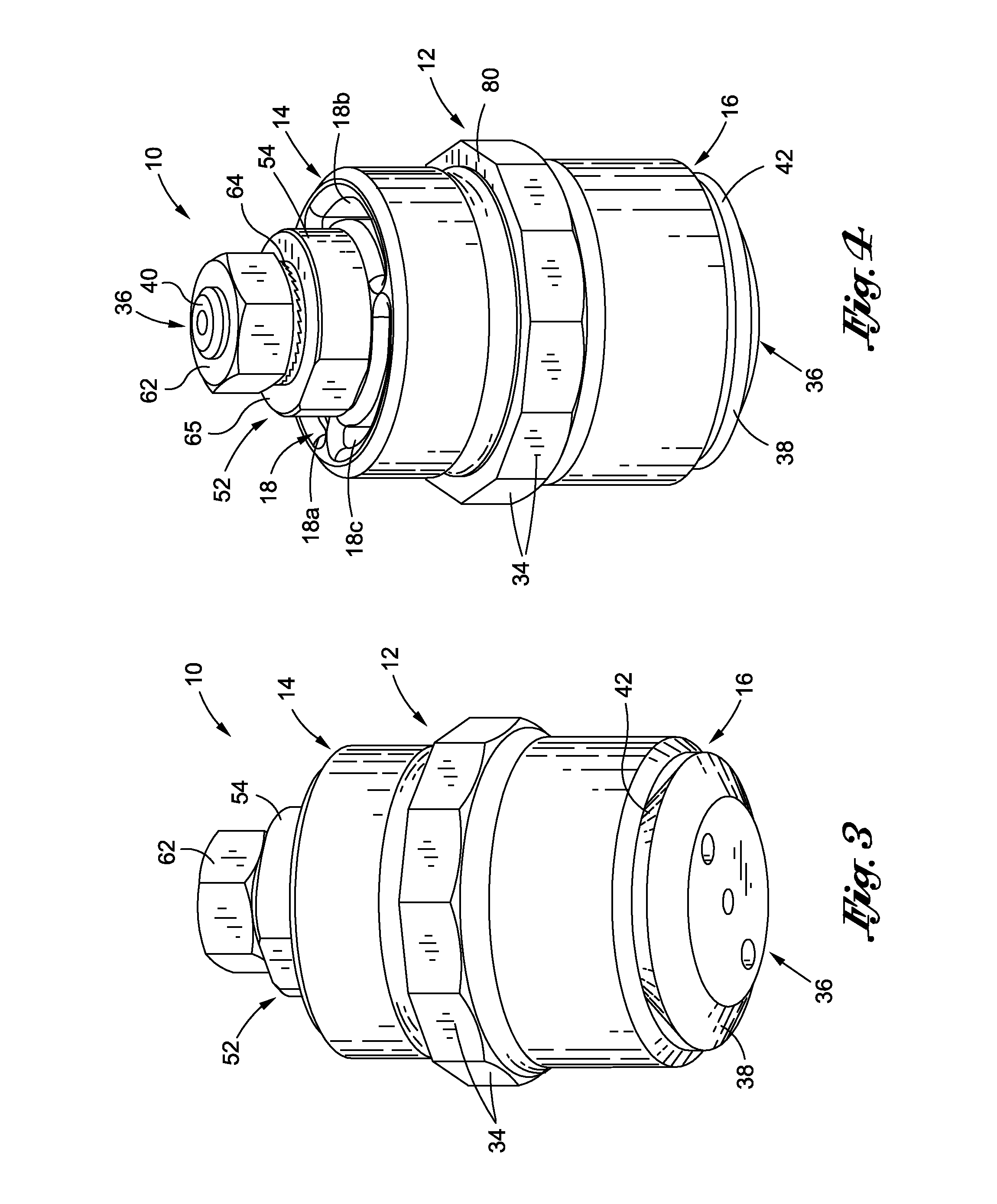Nozzle design for high temperature attemperators
- Summary
- Abstract
- Description
- Claims
- Application Information
AI Technical Summary
Benefits of technology
Problems solved by technology
Method used
Image
Examples
first embodiment
[0034]Referring now to the drawings wherein the showings are for purposes of illustrating preferred embodiments of the present invention only, and not for purposes of limiting the same, FIGS. 1-6 depict a nozzle assembly 10 constructed in accordance with the present invention. In FIGS. 1, 2 and 5, the nozzle assembly 10 is shown in a closed position which will be described in more detail below. Conversely, in FIGS. 3, 4 and 6, the nozzle assembly 10 is shown in an open position which will also be described in more detail below. As indicated above, the nozzle assembly 10 is adapted for integration into a desuperheating device such as, but not necessarily limited to, a probe type attemperator. As will be recognized by those of ordinary skill in the art, the nozzle assembly 10 of present invention may be integrated into any one of a wide variety of different desuperheating devices or attemperators without departing from the spirit and scope of the present invention.
[0035]The nozzle ass...
second embodiment
[0054]Referring now to FIGS. 12-14, there is shown a nozzle assembly 100 constructed in accordance with present invention. In FIG. 12, the nozzle assembly 100 is shown in a closed position which will be described in more detail below. Like the nozzle assembly 10 described above, the nozzle assembly 100 is adapted for integration into a desuperheating device such as, but not necessarily limited to, a probe type attemperator.
[0055]The nozzle assembly 100 comprises a nozzle housing 112 which is shown with particularity in FIG. 13. The nozzle housing 112 has a generally cylindrical configuration and, when viewed from the perspective shown in FIG. 13, defines a first, top end 114 and an opposed second, bottom end 116. The nozzle housing 112 further defines a generally annular flow passage 118. The flow passage 118 comprises three identically configured, arcuate flow passage sections 118a, 118b, 118c, each of which spans an interval of approximately 120°. One end of each of the flow passa...
PUM
| Property | Measurement | Unit |
|---|---|---|
| Angle | aaaaa | aaaaa |
| Diameter | aaaaa | aaaaa |
Abstract
Description
Claims
Application Information
 Login to View More
Login to View More - R&D
- Intellectual Property
- Life Sciences
- Materials
- Tech Scout
- Unparalleled Data Quality
- Higher Quality Content
- 60% Fewer Hallucinations
Browse by: Latest US Patents, China's latest patents, Technical Efficacy Thesaurus, Application Domain, Technology Topic, Popular Technical Reports.
© 2025 PatSnap. All rights reserved.Legal|Privacy policy|Modern Slavery Act Transparency Statement|Sitemap|About US| Contact US: help@patsnap.com



